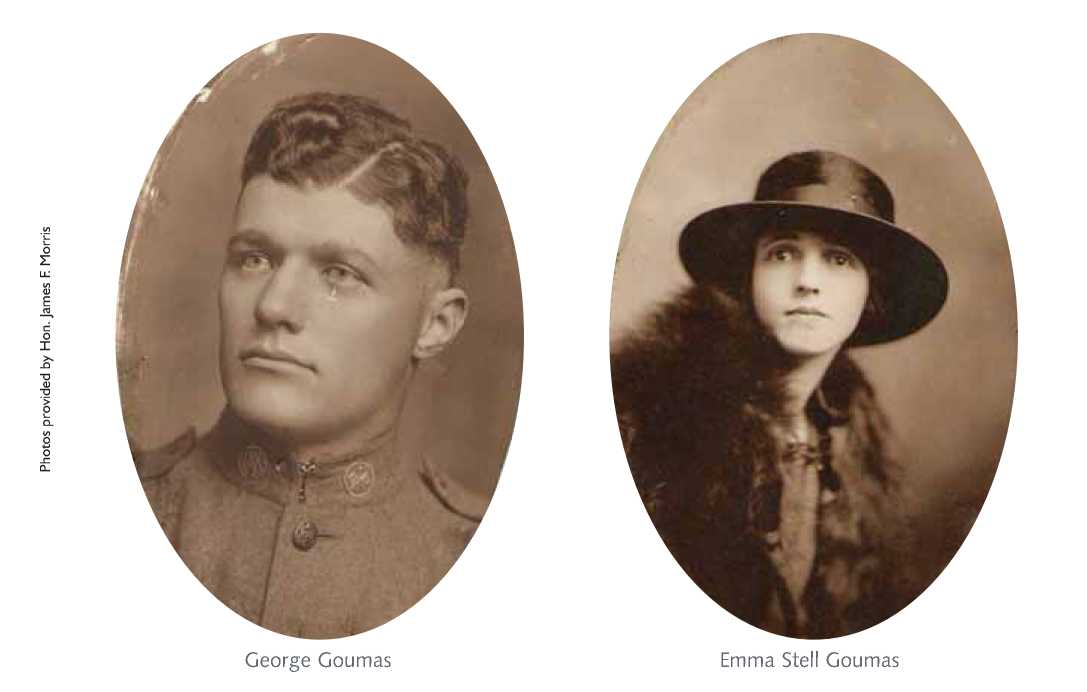Rule of Law Doesn't Just Happen
| Publication year | 2010 |
| Pages | 0024 |
GBJ Feature
Rule of Law Doesn't Just Happen
by Hon. James F. Morris
We like to believe that criminal cases are tried by impartial juries, presided over by untouchable judges, given "Just the facts, ma'am" by the prosecutors and police and enthusiastically represented by devoted defense attorneys. We can be outraged when confronted with evidence that the system is sometimes corrupted, that the "rule of law" we so treasure can break down through the manipulation of individuals, special interests and even large communities. Sometimes it is easier to see at a distance the immense pressures occasionally exerted on the legal system, and to understand how malleable the rule of law is, how it must be nurtured to live up to its claim of righteousness.
In this story the distance is provided by time. All the principals are long passed but the record of their efforts still instructs. This story is not another about Leo Frank, but Frank's experiences certainly were fresh in the minds of our players.
In 1913, much of the world was caught up in the accusation that Frank had murdered Marietta resident Mary Phagan, a controversy that for years tore apart the Atlanta area, setting newspapers, politicians, races and religions against each other. That the case still reverberates is evidenced by the movie-length treatment it received last year from PBS. Frank's jury recommended the death penalty, habeas corpus petitions were repeatedly denied by the U.S. Supreme Court, but the sentence was commuted to life by Gov. John M. Slaton the week before he went out of office.
Steve Oney wrote a wonderful account of the investigation, trial and the eventual lynching of Frank in his 2003 book, "And the Dead Shall Rise," recounting the power struggles led by various local newspapers, national publishing chains, the New York Times, the Ku Klux Klan (KKK), the Jewish community and any number of other groups to impact the outcome of the drama. When Frank was ultimately kidnapped from prison in Milledgeville, hauled to Marietta and lynched in 1915, evidence indicates that the lynchers were led by the best citizens of Marietta, the superior court judge, law enforcement officers, the prosecutor and others. Their motive seems to have been that the rule of law, to their mind it was the Fulton County jury's death penalty verdict, had been subverted by special interests and needed to be carried out by their righteous selves. The local community then locked arms and successfully derailed any effort to prosecute the lynchers. The community's

behavior colored the city of Marietta and Cobb County's reputation for years and not every contemporary local citizen was pleased with this world view.
In 1931 another murder occurred, this time inside Marietta. Though many of the same social pressures were in play, the outcome was very different and the way the fascinated community managed the issues makes Goumas v. The State worth remembering.
George Goumas emigrated from Greece in 1905 as a teenager. Five years later he was living in Marietta, speaking English and soon operating the restaurant next to the Cobb County courthouse. As was characteristic of Greek businessmen, he networked with other Greeks, turning his restaurant over to a countryman in 1914 and opening a Marietta meat market with the profits. Goumas had an eventful year in 1913, becoming an American citizen and later quietly entering a guilty plea to "possession of a pistol not in an open manner" resulting in a hefty fine of $60. In 1917 he was indicted for possession of 13.5 gallons of non-tax paid corn whiskey and, as happened to so many accused, sought shelter in the U.S. Army which was just gearing up to fight WWI.
Goumas was a natural soldier, proud and attentive to his duties. He was trained as a signalman, joining a dangerous detail in France that ran telephone lines from forward observers who were targeting artillery and providing "eyes on" intelligence information about what the Germans were doing on their side of the trenches. On Oct. 21, 1918, Goumas and his team were in a trench when two enemy artillery shells landed in it. Goumas was wounded, knocked unconscious for a time, but woke to find five of his buddies to be in worse shape than he. One-by-one he carried each man through the continuing artillery bombardment, through machine-gun fire, snow and mud to a distant military ambulance. After delivering the last man to the medics, Goumas returned to the trench and repaired the telephone wires so the commanders could successfully repel the attack. He remained on the job until directly ordered to report for medical treatment.
For his heroism, Goumas was...
To continue reading
Request your trial
